 There is an ancient-long tradition on Cyprus to make so-called lefkaritikon lace embroideries. These masterpieces helped the country, and the village Lefkara in particular, to survive and develop throughout hundreds of years. The lacemaking made Lefkara as wealthy a town as, for example, Nicosia. Though, the life of lace traders wasn’t easy at all. They were trying to sell lace abroad, without talking foreign languages, without any previously established connections, and even without enough money for expenses at first.
There is an ancient-long tradition on Cyprus to make so-called lefkaritikon lace embroideries. These masterpieces helped the country, and the village Lefkara in particular, to survive and develop throughout hundreds of years. The lacemaking made Lefkara as wealthy a town as, for example, Nicosia. Though, the life of lace traders wasn’t easy at all. They were trying to sell lace abroad, without talking foreign languages, without any previously established connections, and even without enough money for expenses at first.
The lefkaritikon lace embroidery was named after Lefkara, the Cyprus village where it was developed. Due to its geographical position, at a 1750 f. altitude from sea level, Lefkara played an important role as a resort for the nobles among the island’s conquerors. As a result, the women of Lefkara had the opportunity to watch Venetian noblewomen and learn from them, thus enriching their traditional embroideries, the “asproploumia”, with patterns and techniques which, combined with the needlewomen’s innate artistic nature, have come to be known as the “lefkaritikon” embroidery masterpieces.

This contact was catalytic for the village’s subsequent socio-economic system as it seems to have influenced the Lefkara architecture, employing Venetian rhythms that encouraged the gathering of the needlewomen, promoting the role of women in the village society, as well as the economic role Lefkara played compared to the rest of Cyprus.
“As far as I can tell, the embroideries were first produced in Lefkara since the time of the Venetians. In fact, legend has it that Queen Catherine Cornaro who came to Lefkara on vacation extended an invitation to Leonardo da Vinci. From then on sprang up the various embroidered designs. Some say that a part of this embroidery is found at the Milan Cathedral. This was in 1481, I believe. From then on, the women of Lefkara learned the craft from the Venetian women and gradually integrated their own designs or other imported from abroad in different sizes meant for European furniture. This is how commerce began, first limited within the region, reaching to Alexandria, Egypt and later on to Europe. The first men that left Lefkara for Europe were young and illiterate. This is why I regard them as true heroes. You can imagine how difficult it was to knock on someone’s door with the intention of selling them embroideries without speaking their language. This is how commerce was initiated”, narrates one of the Cypriots.
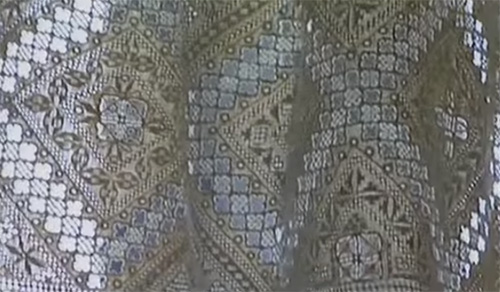
The lefkaritikon lace embroidery is the most artistic and creative aspect of the embroidering art and the Cypriot folk tradition. It is an embroidery of great value that reflects the dynamism, sensitivity, and power of observation of Cypriot women.
Each design of the lefkaritikon lace embroidery is inspired by nature and the environment, taking on its characteristic form as the stitches combine.
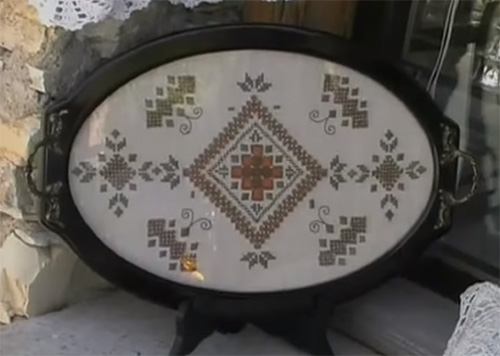
“For me, the embroideries I inherited from my father… He died in ‘58. My mother was in Sweden at the time and she distributed the embroideries to my brother and me. This was in the ‘60s. It’s now been 40 years. What I’ve always wanted was to have these embroideries exhibited. I never once contemplated selling them”, says another Cypriot man.
Throughout the centuries, the lefkaritikon was the reason why the area and the island, in general, knew economic growth in adverse times. Through the international sales of the lefkaritikon, the establishment of family and local production units for the manufacture of embroidery, the involvement of women in the economically active population and the consolidation of their leading role in the family business, the lefkaritikon changed both the economic and the social structure of the village.
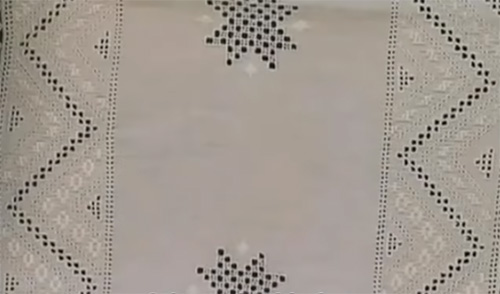
“When people didn’t have much money, Lefkara was a rich village. My uncle even lent the Kykkos Monastery money! The inhabitants of Lefkara were indeed wealthy. And this definitely reflected on us, they used to bring us beautiful clothes from abroad. They showed us new ways that exerted an influence on us to a great degree. We used to visit the cities for shopping and no one would guess we lived at a village. They all thought we came from Nicosia”, narrates Cypriot woman.
The lefkaritikon lace embroidery constitutes the significant chapter in the Cypriot cultural history. The embroidery has gained international recognition and has come to be known as the “lefkaritikon embroidery” from Cyprus, reflecting a specific style which remains unmatched all over the world.
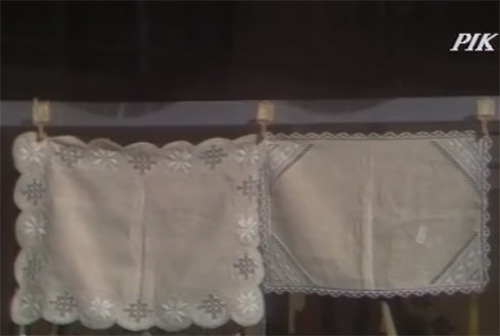
“I really take my hat off to them. The town of Lefkara indeed saved the whole region! The name Lefkara used to comprise Vavla, Kato Drys, Vavatsinia, and Kato Lefkara. We were the largest area after Athienou. Now we are the largest area in terms of size. All of the surrounding villages produced embroideries. Even as we speak, 99% of the Lefkara families are involved in the production of embroideries and silverware. Otherwise, they would have to abandon the area in order to make a living. This is why we insist on getting official support. Tourism has recently decreased, due both to the economic crisis facing Europe as well as to other misfortunes befallen on us”, says one of the Cypriots.
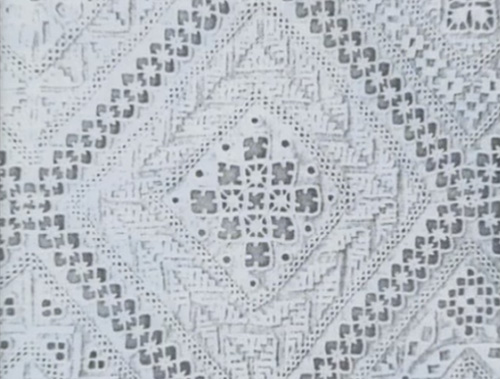
The cultural value of lefkaritikon lace embroidery is confirmed by its longevity. It is a product that evolved along with the history of Lefkara, with a significant role in its social and economic growth. Its presence as an art that kept evolving throughout the centuries recorded a rich production of compositions of works of art that constructed a deep cultural tradition.
The study of the lefkaritikon history and the dynamics produced by its development seal its indisputable cultural value. Its capacity to exist as a live cell of creation, its endurance in time, its ability to evolve without altering its creative personality, its contribution as an element of social and economic growth, make up a cluster of parameters that consolidate its great cultural value.
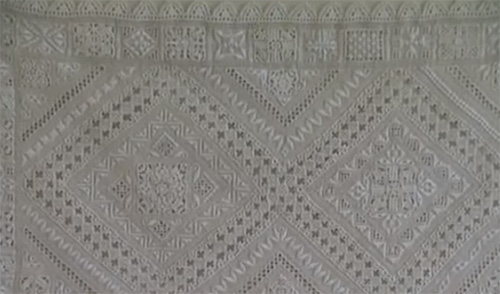
“They used to begin with the easiest part. The seam stitch. Then they cut through the fabric and embroidered the designs. Our mothers taught us. My mother was very intelligent, she knew how to embroider excellent designs. The “river”, the “xoloudi”, the squares. She knew everything”, says Cypriot woman.
The fact that the lefkaritikon was created through the innate talent of individuals that used to work the land but also had the self-confidence to integrate foreign elements in new handicrafts of international appeal makes it an authentic product of human intellectual creation.
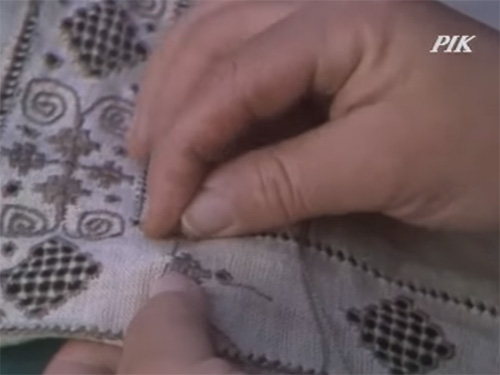
“Not everyone knew how to embroider. They used to work on small squares. Later on, they started manufacturing cloth in Zodia. They brought us the linen which we placed in hampers for a while, before washing and ironing it in order to cut it in as many napkins as we wanted”, remembers Cypriot woman.
Its international recognition as a work of art by the 1900s France until nowadays invest the Lefkara embroidering art, with an added worldwide cultural value consolidated by its long survival in the universal embroidering map.
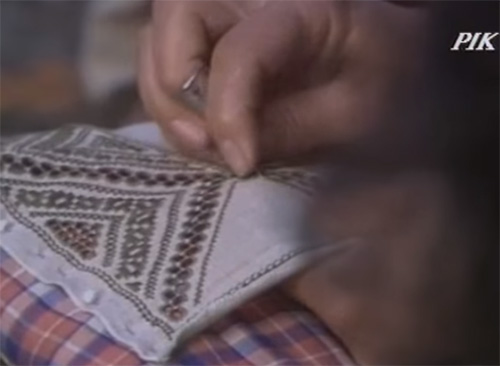
“The trader of the lefkaritikon abroad was an unhappy man. This may be deduced by reading the cards sent by many of them to my father who could then be at Lyon, receiving a card from Paris or some other central European region. In these cards, they recounted their misadventures the hardships, their awkwardness in terms of how to act. Their life was indeed a hard one. They couldn’t speak the language. They were not self-confident enough as to act and tackle their problems in the correct manner. For instance, financial problems, relating to banks or work permits. With their own knowledge of the language which was almost non-existent, they could not cope. That is why their life was so hard”, explains Cypriot man.
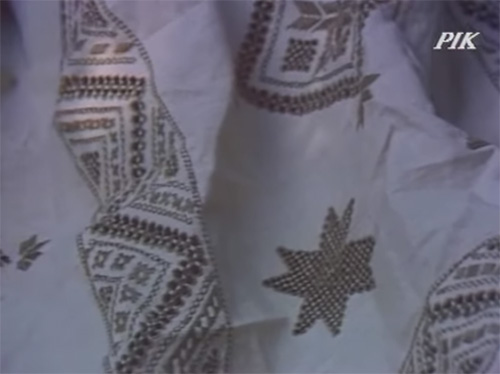
The breadth of the lefkaritikon value, both as an element of world cultural heritage and an element of human intellectual creation demarcates today, an indisputable responsibility to preserve the lefkaritikon from the threat of decay. It equally dictates the need to establish new bases upon which to preserve and upgrade it.
(c)


